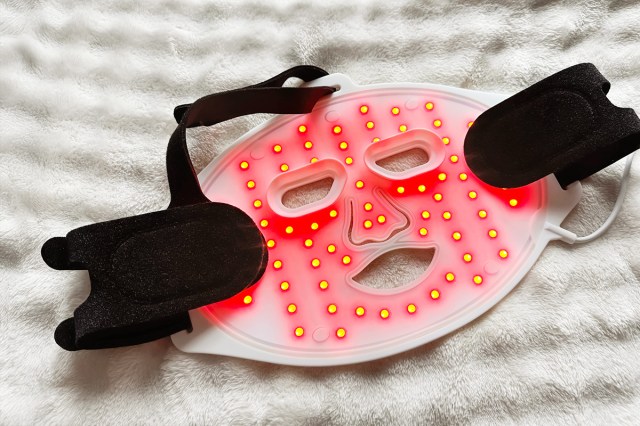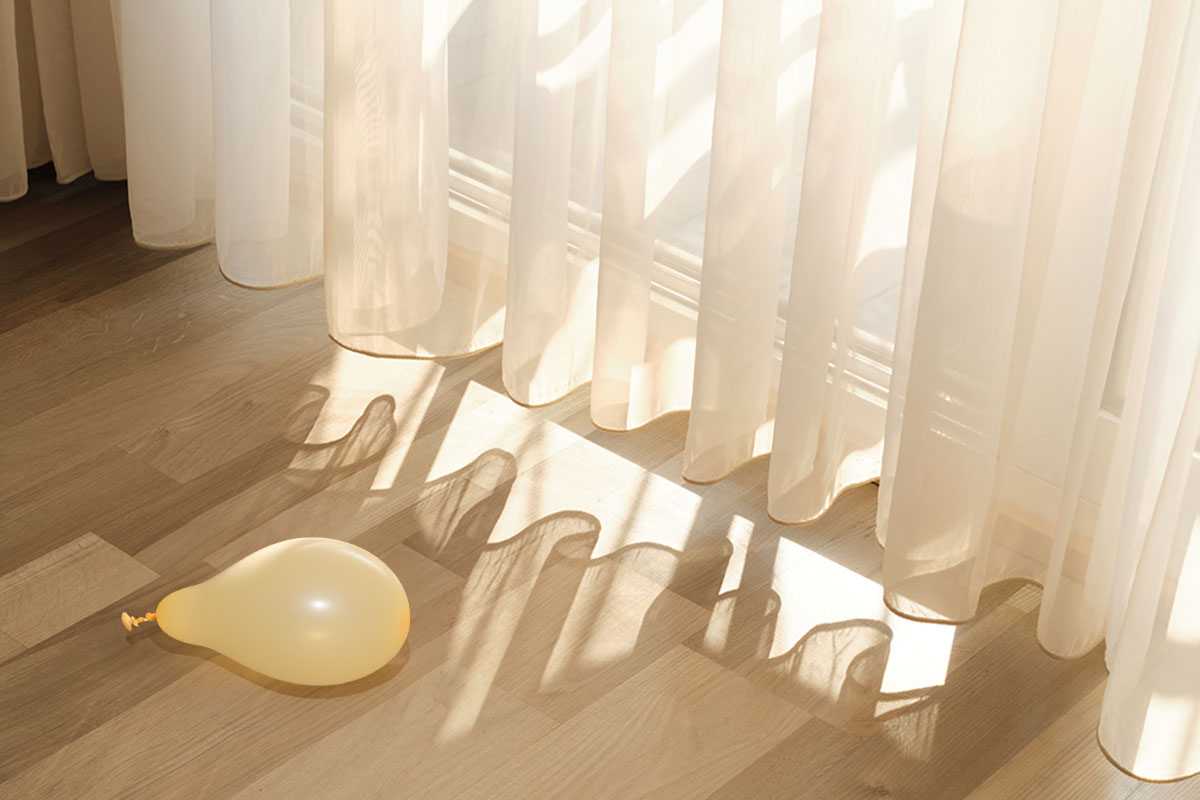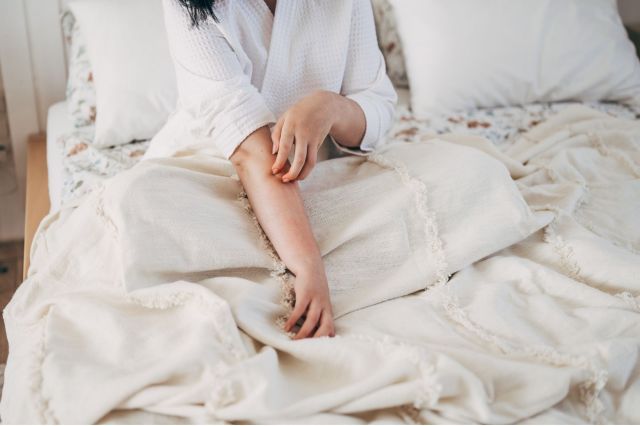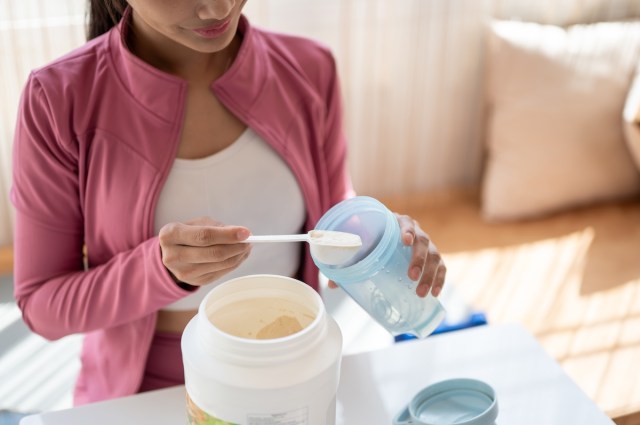All featured products and deals are selected independently and objectively by the author. Better Report may receive a share of sales via affiliate links in content.
If I told you red lights could reverse wrinkles, and blue light might heal acne, would you believe it? When it comes to beauty, there are plenty of gimmicks. Between all the goops, oils, and tools that promise you’ll look 10 years younger with longer, healthier hair, it’s hard to know what to believe. Though LED light therapy sounds too good to be true, it’s actually the real deal when used correctly.
Prices are accurate as of August 23, 2025. Subject to change.
Table of Contents
– How Does Light Therapy Work
– What to Look for in a Red Light Device
– How to Use Light Therapy in Your Routine
– The Masks and Tools We Love
How Does Light Therapy Work?
If you use red light therapy consistently, you’ll likely see a reduction in wrinkles, but the explanation isn’t quite as simple as light alone smoothing lines. When the proper wavelengths of red light penetrate the dermis of the skin, it stimulates fibroblast cells, which then produce collagen and elastin, and thus wrinkles start to repair.
Blue light, at the correct wavelength, kills bacteria on the epidermis of the skin, helping to heal some types of acne. “Blue light therapy targets acne-causing Cutibacterium acnes by activating porphyrins within the bacteria, leading to their destruction,” explained board-certified dermatologist Dr. William D. Shipman III. “It also helps regulate oil production and reduce inflammation, making it beneficial for mild to moderate acne.”
While we’re focusing on facial concerns in this guide, red and near-infrared light may also help treat thinning hair by improving blood flow and cellular metabolism in hair follicles, says Dr. Shipman. But don’t worry about a red light mask increasing facial hair growth. “Facial skin isn’t hormonally sensitive in the same way the scalp is,” he says. “So there’s no evidence that red light masks cause unwanted facial hair growth. The concern is more theoretical than clinical.”
What to Look for in a Red Light Device
When browsing these types of devices, you’ll see lots of claims and stats, like types of treatments and number of bulbs, but wavelength is the most important. You can’t use just any red or blue light and expect results.
“Effective red light therapy typically uses wavelengths between 630–660 nanometers (nm), and near-infrared therapy ranges from 810–850 nanometers,” says Dr. Shipman. “These penetrate the skin at different depths to stimulate collagen or improve inflammation.” For blue light, you’ll need a device that uses 415 nanometers. Dr. Shipman recommends opting for FDA-cleared devices that openly state their wavelength and clinical data.
How to Use Light Therapy in Your Routine
Consistency is key. One use every now and again won’t do anything. I like to keep my mask in my living room, so I see it when I lounge at night. If I kept it in my bathroom or closet, I know I’d often forget to use it.
Start with clean, dry skin. Remove makeup and SPF and wait to apply your skincare until after you’re done using your mask.
Many brands sell separate masks for your face, neck, and hands. It makes it easier to do it all in one treatment time, but that convenience will cost you. I do a treatment on my face and then move the mask to my neck and start another. It might not be a perfect execution, but it will do the job.
At-home devices are typically safe to use every day, but Dr. Shipman recommends starting with two to three times a week at first, especially for those with sensitive skin. If you see a dermatologist, ask them how they think you should incorporate it for your specific skin type and concerns.
If you use other wrinkle-fighting products, like retinol, you don’t have to choose one or the other. Dr. Shipman recommends waiting a few hours between a light therapy session and applying retinol, instead of applying it immediately after. If you have especially sensitive skin, you may want to go slowly and skip the mask on nights you use retinol until you know how your skin will react.
When Will You Notice Results?
Results won’t be instant, but there’s no exact answer to when you might start to see change. Most brands advertise results somewhere around six to eight weeks. For many people, it could take three months or longer. It all depends on the severity of what you’re treating, your skin, and how consistent you are.
As one dermatologist told me, light therapy works best on skin that’s already in recovery mode, like after a microneedling session. If you have deep lines and feel like you’re not seeing results, you might consider a trip to the spa to speed things up.
The Masks and Tools We Love
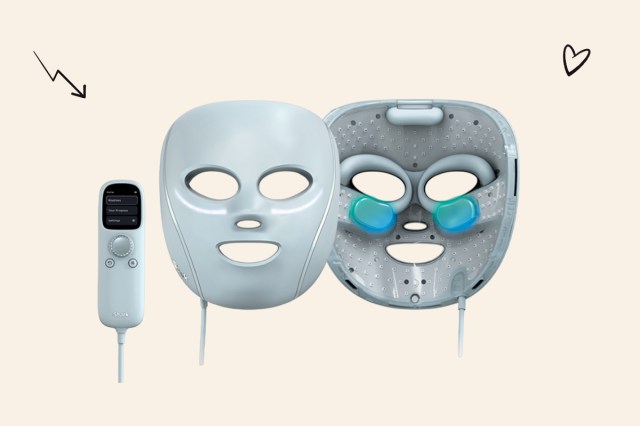
The Best: Shark CryoGlow
| Wavelengths | Red Light: 630nm Deep Infrared: 830nm Blue Light: 415nm |
| Treatments Offered | Red Light for Wrinkles Blue Light for Acne Skin Sustain Under Eye Cooling Only |
| Price | $350 |
| FDA Cleared? | Yes |
I’ve tested several light therapy masks, and Shark’s is hands down the best. The build quality was immediately obvious, and it offers more features for comfort, like forehead and eye padding and a three-point adjustable strap.
The attached remote allows for easily choosing the desired treatment and keeps track of how many you’ve completed. It also shows a countdown while you’re using it, so you can quickly see just how much longer you have to sit. It’s clear every detail was carefully considered when Shark was designing this skincare tool.
The CryoGlow has three modes: anti-aging, acne treating, and skin sustain, which you should switch to once you’ve seen desired results from the regular treatments. Metal plates, AKA Chill Pads, under the eyes help depuff and tighten skin. You can turn them on or off for any of the three treatments, or use just the cooling in between sessions any time your undereyes could use some TLC. I love the added cold therapy, but that means no LED lights are touching the skin under your eyes, which is a con since that’s an area many people want to treat.
These types of products are quite pricey; at $350, this isn’t exactly pocket change, but it’s more affordable than some of the competition. If you’ve been wanting to try light therapy, the CryoGlow is worth it.

Solawave 4-in-1 Radiant Renewal Skincare Wand with Red Light
| Wavelengths | Red Light: 630nm |
| Treatments Offered and Time | Red Light, Heat, Vibration, and Galvanic Current Combination |
| Price | $169 |
| FDA Cleared? | Yes |
If you have wrinkles you want to target on your forehead, eyes, and neck, it’s best to just save until you can get a mask. It will work much better and faster. But if you’re targeting one area, like your undereyes or stubborn 11 lines, it might be worth it to go this route instead. But with a small surface area, it’s even more imperative that you be consistent with using it.
This little wand also uses heat and vibration, so it feels like a real spa treatment when you use it. Solawave now offers a full mask that we haven’t tried yet, but it seems to be similar to the Omnilux. I’m considering getting the Eye Recovery Pro to pair with my Shark CryoGlow.

Dr. Dennis Gross DRx SpectraLite FaceWare Pro
| Wavelengths | Red Light: 630nm Deep Infrared: 880nm Blue Light: 415nm Amber: 605nm |
| Treatments Offered and Time | Red Light for Wrinkles Blue Light for Acne |
| Price | $455 |
| FDA Cleared? | Yes |
I’ve long been a fan of the Dr. Dennis Gross peel pads, which deliver real results with irritation, even for my sensitive skin that can hardly handle any exfoliation, so I was excited to try the brand’s mask. It’s more expensive than Shark’s, but it offers shorter treatment times at just three minutes each, and with no cooling pads, the red lights reach all the way to your undereyes. It also offers blue light for acne and includes amber light, which can help heal sun damage.
It’s not uncomfortable, but it isn’t as nice to wear as Shark’s. It also has a frustrating strap that continuously comes undone, something I’ve noticed lots of users complain about. But it’s not as bulky, so it’s easier to store (or take with you if you’re traveling).
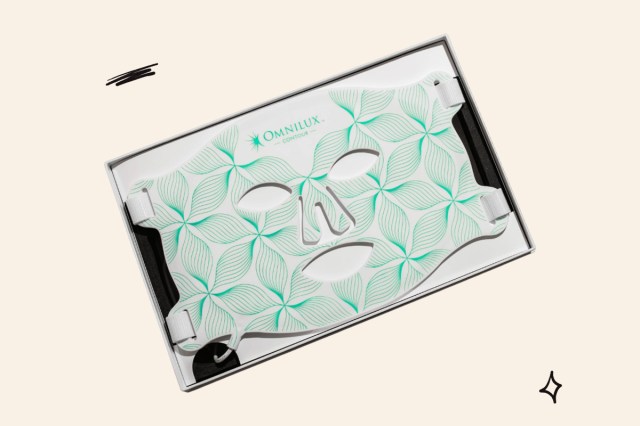
Omnilux Contour
| Wavelengths | Red Light: 633nm Near Infrared: 830nm |
| Treatments Offered and Time | Red Light for Wrinkles (Blue light available with a separate mask) |
| Price | $395 |
| FDA Cleared? | Yes |
Flat masks are a little more uncomfortable to wear every day, but they’re easier to store and travel with, and are easier to use on other parts of your body, like your neck and hands.
The Omnilux Contour is one of the most popular, and it works well, but it offers only red and near-infrared lights. If you want to treat acne, too, you need to buy a separate mask for the same high price tag. Not everyone needs both treatments, but with so many options offering both for a similar price, it’s disappointing to see it missing here.
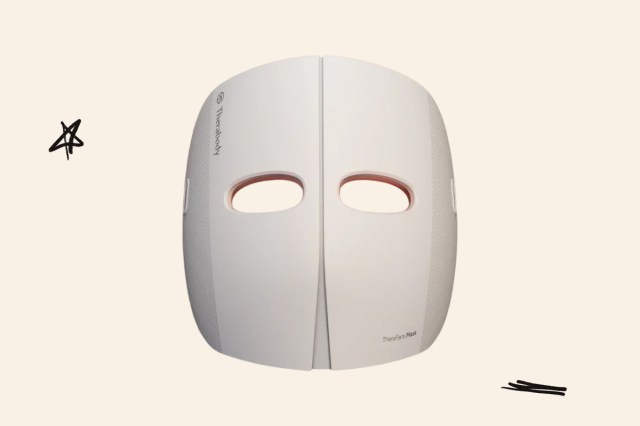
Therabody TheraFace Mask
| Wavelengths | Red Light: 633nm Blue Light: 415nm Near Infrared: 830nm |
| Treatments Offered and Time | Red Light for Wrinkles Blue Light for Acne Vibration Therapy |
| Price | $650 |
| FDA Cleared? | Yes |
I haven’t had the chance to try Therabody’s TheraFace mask, but it’s on my wish list. I have tested most of the brand’s fancy recovery tools — the SmartGoggles are one of my favorite gadgets ever — so I feel confident that its mask is likely as impressive. Even though the lack of nose holes is a bit scary.
I love that it includes vibration therapy, which Therabody is known for with its Theraguns. It makes it feel a little more like a full relaxation tool. At $650, this is one of the most expensive ones I’ve seen.
Feature Image Credit: New Africa/ Adobe Stock
More From Our Network
Better Report is part of Inbox Studio, which publishes content that uplifts, informs, and inspires.
